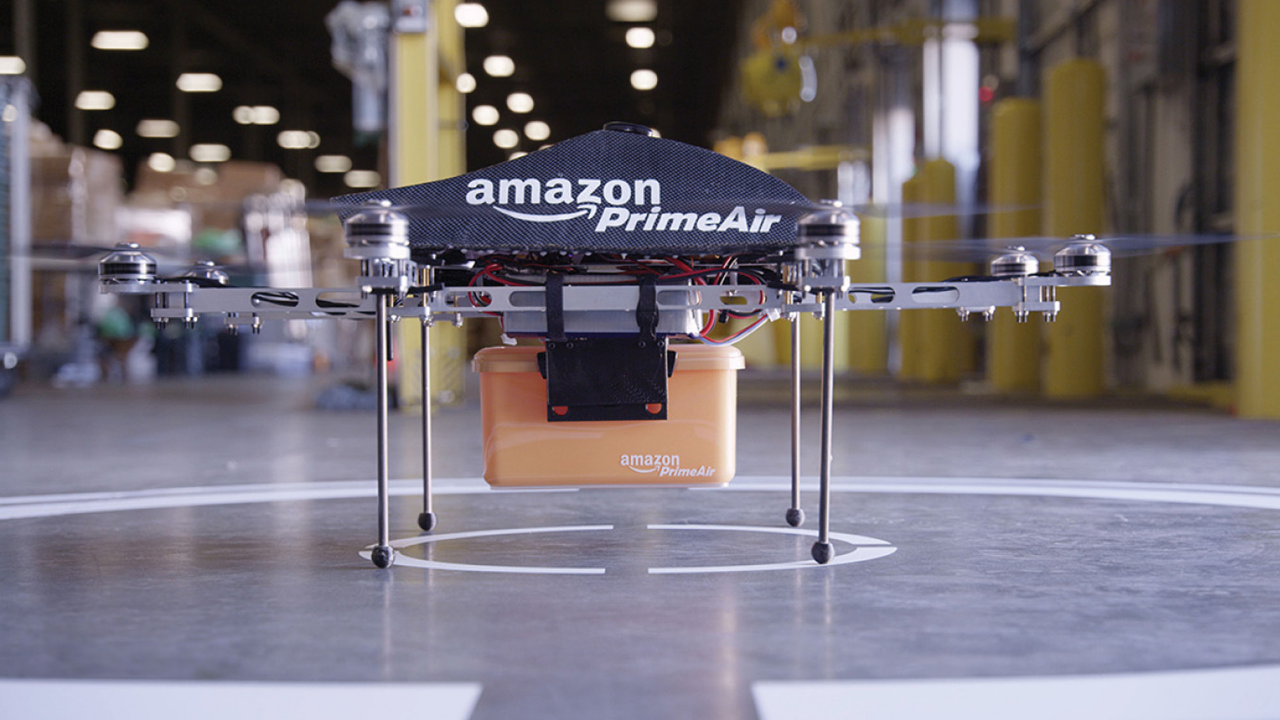The online retailer has been given the green light to test-fly delivery drones across the UK. But what does this mean for the future of online shopping?
Amazon’s hopes to dominate the world of e-commerce have taken a significant step forward after UK regulators granted the company approval to begin testing delivery drones.
For a company built on the concept of fast and efficient deliveries, the move is an exciting leap into the future of logistics.
Drones, Amazon says, will enable faster deliveries while reducing the environmental impact of its operations. But the rollout also brings a host of complex questions about feasibility, sustainability, and the broader implications for the workforce and local economies.
The online retailer is one of six organisations taking part in a trial led by the Civil Aviation Authority (CAA), which has approved the test-flying of drones beyond a human controller’s line of sight in the UK. It’s hoped the project will pave the way for using the machines to deliver packages to homes.
According to the CAA, the scheme will use ‘advanced technologies’ for tasks including the navigation and detection of other aircraft in a controlled environment, in an effort to finalise regulations for wider drone use by major companies.
Sophie O’Sullivan, director of future of light at the CAA, said that their goal ‘is to make drone operations beyond visual line of sight a safe and everyday reality, contributing to the modernisation of UK airspace and the incorporation of new technology into our skies.’
Amazon has previously said it wanted to launch home deliveries via drone in the UK and Italy before the end of 2024. And from an environmental perspective, the new project has potential to reduce the company’s currently mammoth carbon footprint.
Unlike traditional delivery vehicles, drones are electric and produce no direct emissions. In congested cities where delivery vans often sit in traffic for hours, drone deliveries could significantly cut fuel consumption, particularly for last-mile deliveries – the final stretch from distribution centres to homes, which is often the most inefficient and polluting leg of the journey.
Amazon has recently revealed its new MK30 drone that has the capacity to carry around 2.2kg and can fly twice as far as previous models.
‘The MK30 is quieter and will be able to fly in more diverse weather conditions – meaning customers can get super speedy deliveries even in situations like light rain, and hotter and colder temperatures,’ the company explained.
The project will reportedly create more than 2,000 new jobs, with a three-floor production warehouse rescheduled to be built in Northampton.
But it’s not without its complications. Despite their potential, drones come with a host of logistical challenges. Weather conditions, regulatory restrictions, and safety concerns all pose significant barriers to widespread adoption.
It’s one thing to envision a drone dropping off a package on a quiet suburban street, but quite another to safely navigate a swarm of drones over busy city centres.
In order to tackle these hurdles, the CAA is working with Amazon to test delivery drones in an ‘innovation sandbox’.
The sandboxes are controlled environments where the organisations can test and further develop the new technology against a regulatory framework, helping applications to maximise readiness for their innovation.
However critics have also pointed out the limited payload capacity of these drones. Most can only carry packages under five pounds, which excludes a large portion of Amazon’s inventory from being delivered this way. And even for lighter items, the cost-effectiveness of drones remains uncertain.




















